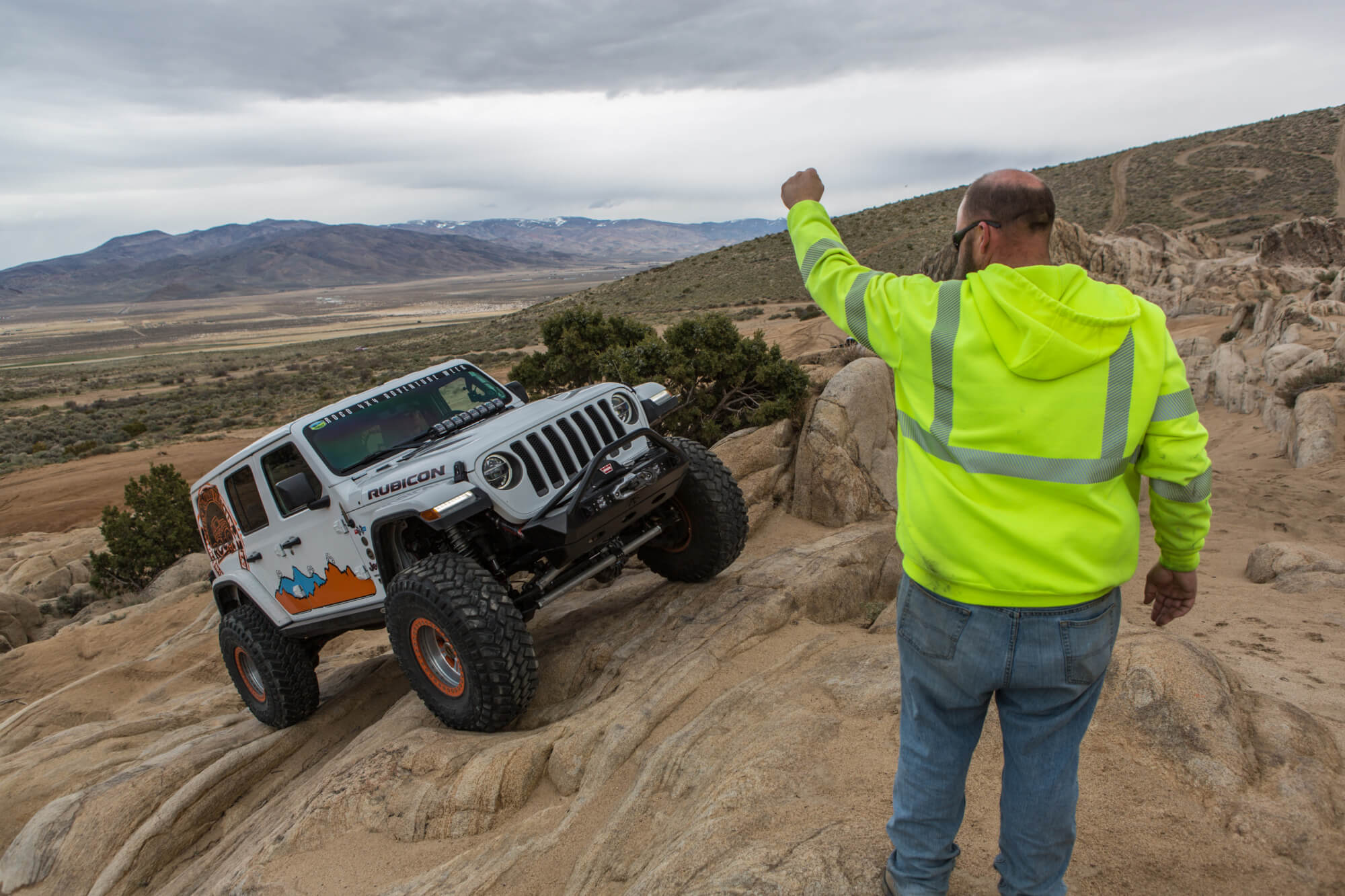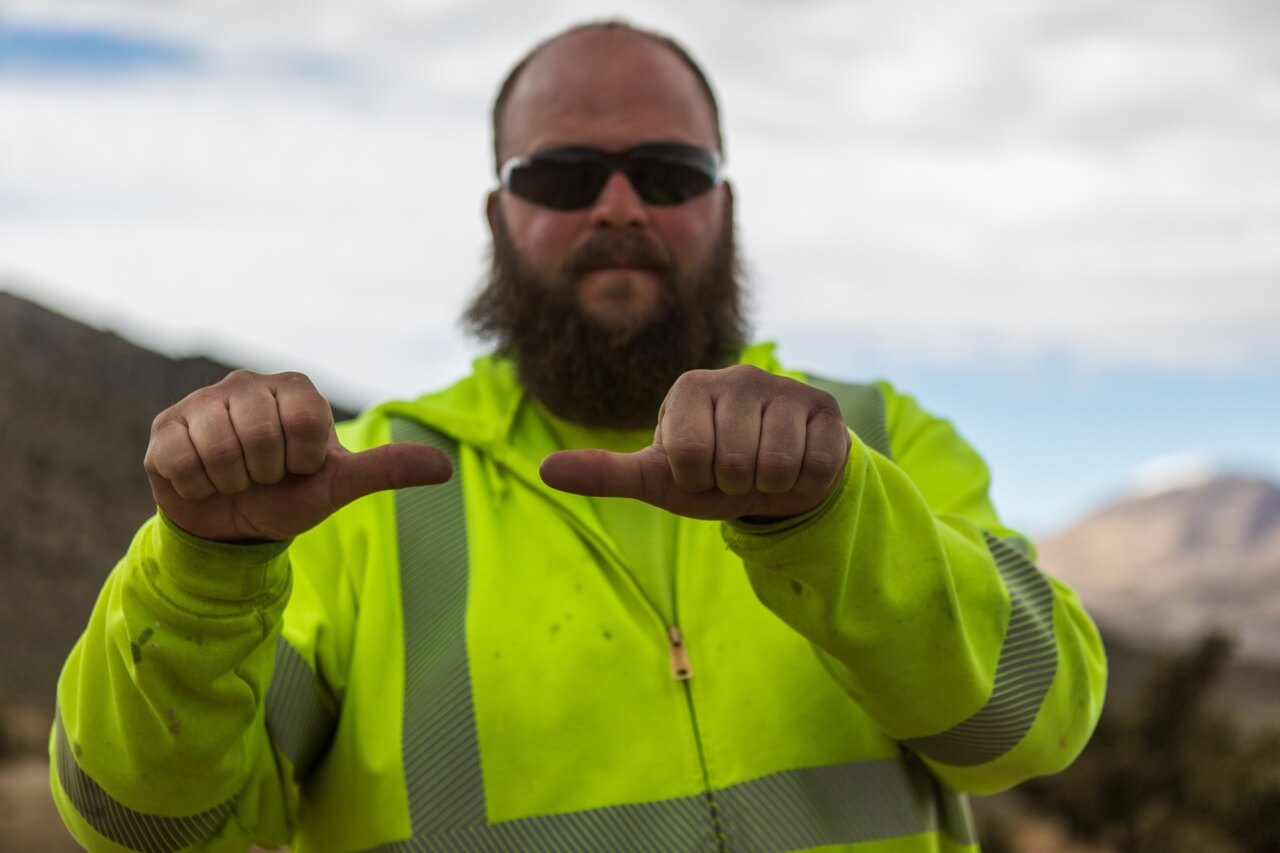
Driving off-road can be a challenge, that is part of the appeal. Smashing sheetmetal and breaking parts is less appealing. To avoid these results, we often see spotters used on the trail. A spotter can see things from outside the vehicle that the driver is unaware of, and the goal is to efficiently and accurately relay this information to the driver. Here are our top tips for how to spot and what you want to know before you step out of the vehicle.

Multiple spotters is just asking for trouble. Use one spotter, and have it be someone that you trust. If another person has a different vantage point and sees something your spotter cannot, the information should be passed to the spotter, not the driver.
Basic Rules
There are some basic rules that apply to every situation where you use a spotter.
- Use A Spotter You Trust- If you are in a situation that is challenging enough that you need help, it is best to use someone that you trust. It is only natural that the more you work together the better you will understand each other.
- Don’t Be Afraid To Take A Look- Even if you do trust your spotter (and you do, right?) it can be worthwhile to stop and get out and take a look yourself before tackling a particularly intimidating obstacle. Even the best drivers in the world do this, so don’t be ashamed to take a look.
- Have One Spotter- Too many “suggestions”, often differing, can make a tough situation worse instead of better. Have one spotter and concentrate on only that person. If someone else can see something your spotter does not see, they should relay that information to the spotter, not the driver.
- Don’t Be In A Hurry- Unless you are in a race, there is no need to be in a rush. Take your time, only use as much throttle as necessary, and try to stay calm. If you are part of a large group and it is making you flustered, pull off and let the others go. This will give you time to calm your nerves and see how other people approach the obstacle.
- Make Sure You Can See Your Spotter- If you are climbing a steep ledge, or your spotter needs to stack a rock, make sure that you wait until you can see them before proceeding. The same goes for anyone else within the immediate vicinity of your vehicle.

We don’t recommend using “left” and “right” when spotting as it can cause confusion between the driver and spotter. “Driver” and “passenger” are better terms to use, but even better still is to replace verbal communication with hand signals.
Use Hand Signals
Visual commands are easier for the driver to process and follow than verbal commands. “Rights” and “lefts” can be confusing with the spotter and driver facing each other, and if verbal commands are required “driver” and “passenger” work better than “left” and “right”. Note that hand signals can be used even with loud engines or music playing, and they don’t betray when the spotter is excited or worried like verbal commands do (which can be a good thing or a bad thing). Obviously, the spotter needs to be conscious of his position and ensure that they driver can see him.
- Come Forward- Put your hand up with the palm facing towards you and wave the driver forward. Pinch your thumb and index finger together if you want the driver to advance forward just a short distance.
- Stop- Use a closed fist to signal the driver to stop.
- Turning- Point with the thumb or index finger to the left or the right when you want the driver to turn the wheel. Exaggerated movements can be used when you want the driver to go to full lock, more subtle moves when smaller corrections are required.
- Reverse/Back Up- Using an open palm towards the driver, make a pushing motion backwards. The pinching motion with the thumb and index finger can be useful for backing as well. Sometimes the driver just needs to back up a little, while other times you might want them all the way off the obstacle to start again.

Winching has its own unique set of requirements, which we covered in detail here. We prefer to have the driver control the winch so they can modulate the throttle and turn the wheels at the same time that they are winching, but admittedly that is a lot to do at the same time.
Winching
Winching has its own set of unique requirements since the power of a winch can easily cause bodily harm if not used responsibly.
- Winch In- Closed fists with thumbs pointed in indicate to the driver to power the winch in. Warn has their own hand signals included in the instruction manual with every winch. While they differ from what we recommend here, the important thing is for the driver and spotter to agree on the commands ahead of time.
- Winch Out- Closed fists with thumbs pointed out indicate to power the winch out. Note that the signals are even obvious with gloves on and different enough that they will not get confused.
- Stop- Just as with driving, one or two closed fists mean to stop powering the winch and stop the vehicle as well. Some winches (spur gear winches like Warn’s 8274 in particular) take a few feet before they stop spooling, and the spotter should keep this in mind.

A closed fist is used to signal the driver to stop. The fist should remain closed until the next command is given to the driver. Two closed fists or crossed arms over the head of the spotter can also be used to notify the driver to stop movement.

Wheeling is an activity that requires finesse, and often times surmounting an obstacle is a matter of precision with regards to throttle and tire position. If you want the driver to come forward just a little, pinch your fingers together. This signal is also useful for backing up to hook up a trailer or can be combined with other hand signals where only a slight change is required, as noted above.

Note how Ray is looking directly at the driver and calmly giving a very clear signal. Hand signals don’t betray when the spotter is excited or worried like verbal commands do, which can be a good thing or a bad thing depending on the situation. High visibility clothing isn’t a requirement, but it does help the spotter catch the driver’s eye.

Sometimes you need a rock under a tire to get up a ledge or allow the differential to clear an obstacle. The driver shouldn’t be moving while the spotter is getting a rock, and definitely shouldn’t move while the spotter is placing a rock under the tire. Here Ray has put on gloves before picking up the rock as to not injure his hands.

Using a winch has its own set of commands when the person operating the winch is someone other than the driver. To signal the winch to be powered in, put your fists up with your thumbs pointed inward. To spool the winch out, the spotter puts his fists up with his thumbs pointed out. Stopping the winch is the same hand signal as stopping a vehicle, a closed fist.







2